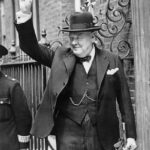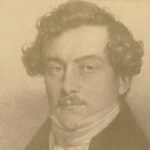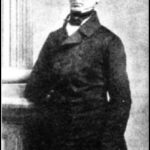1. Rome was not built in a day, as we say, and neither was the Fifth Symphony! Beethoven made his first notes in his famous sketchbook around 1803-1804. The initial ideas about the opening, the primal four-note motif, were not very impressive. He had to develop it further. He had started to focus more on this composition from 1807 and finished the piece in 1808.
2. The premier of the Fifth Symphony was, at best, a mixed reception. The evening was too long, Beethoven stuffed the program with too many compositions. Because the date of the premier was on 22 December 1808, it was extreme cold in the Theater an der Wien. The Symphony itself was shocking for most, some left early.
Even the rehearsals were somewhat ill-fated, as the musicians, after some time were not able to tolerate Beethoven as the conductor, and refused to work with him. Communication had to go through the concert master.
3. In its last movement, the Fifth Symphony was the first major orchestral composition to use trombone, the high-pitched piccolo and the low-pitched contrabassoon. This innovation had to be done in order to reach wider dynamics in music, this way bringing to life this grandiose symphony.
4. The Fifth Symphony has a twin, the Sixth Symphony. Beethoven worked on both at the same time and they were meant to be inverses. The Fifth, a symphony of human life as tragedy, destiny and struggle. The Sixth, representing the harmony and serenity of nature.
5. There was and there is so much debate about the correct tempo of the Fifth Symphony, that some even tried to involve supernatural powers to help. Robert Schumann, according to an anecdote, once consulted a spirit about the correct tempo. When the spirit finished knocking the tempo on the table, Schumann replied: The tempo is faster dear table…!
6. The Fifth Symphony is also called the Fate Symphony. This name is probably not coming from Beethoven, but rather from his secretary Anton Schindler. He told the world that Beethoven likened the first four-notes (the Fate-motif) to fate, knocking on the door. Regardless this revelation, the music is about struggle against a menace and a triumph at the end.
7. In World War II the Allied powers used the Fate-motif and the letter V (as for victory) in their propaganda campaigns. The letter V in Morse code is short-short-short-long, exactly the same as the Fate-motif. The letter V in roman numbers is 5, like the number of Beethoven’s Fifth Symphony.
8. Voyager 1 and 2 space probes were launched by NASA in 1977. On both of them, there is a golden record, a 12-inch (30 cm) phonograph, that contains selected sounds and images from planet Earth. In the music selection we (or rather hopefully aliens will) find the first movement of Beethoven’s Fifth Symphony. The Voyagers are still traveling deep space, even today.










